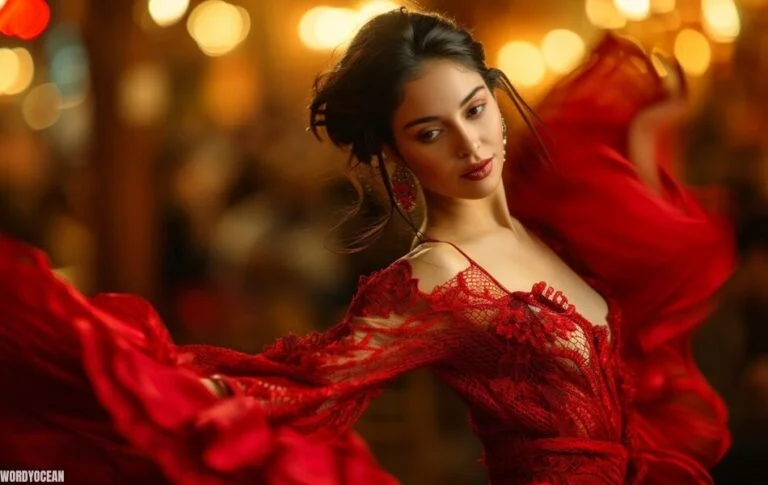Introduction to the Kiriki Red Dress Code
New York City is a melting pot of culture, style, and self-expression. Among the countless trends that have emerged from its vibrant streets, the Kiriki Red Dress Code stands out as a beacon of elegance and sophistication. This unique dress code invites fashion enthusiasts to embrace boldness while maintaining an air of refinement. Whether you’re headed to a gala or simply want to make heads turn during your evening stroll through Manhattan, understanding the nuances of Kiriki Red can elevate your wardrobe like nothing else.
The allure of this striking color lies not just in its visual impact but also in how it embodies confidence and charisma. As we dive into the world of Kiriki Red, get ready to explore its fascinating history, essential elements for styling success, and tips on mastering this captivating look that defines New York’s fashion scene today.
The History and Evolution of the Dress Code in New York
Dress codes in New York have a rich and storied past. In the early 20th century, socialites donned their finest attire for soirées and galas, where elegance reigned supreme. Fashion was not just about aesthetics; it reflected status and societal norms.
As the decades rolled on, styles evolved dramatically. The roaring twenties brought flapper dresses that symbolized liberation and youthfulness. Post-war America saw a return to classic silhouettes with an emphasis on tailored suits and refined dresses.
The late 20th century introduced bold statements through punk rock influences. This period shattered traditional notions of what style should look like in urban settings.
Today’s dress code is eclectic but often centers around powerful colors like red—an embodiment of confidence and presence in the concrete jungle that is New York City. Each evolution captures the essence of its time while paving the way for new expressions of individuality.
Breaking Down the Elements of Kiriki Red Style
Kiriki Red style is all about bold expressions and confident choices. The foundation lies in the striking red hue, symbolizing passion and power.
Fabrics play a crucial role. Think luxurious silks, velvets, and tailored materials that drape beautifully. Tailoring should enhance your silhouette while allowing freedom of movement.
Silhouettes vary widely—from fitted to flowy—but each piece must command attention. A well-tailored dress can be paired with flowing capes or structured jackets for an unexpected twist.
Footwear deserves special mention too. Chic stilettos exude sophistication, but don’t overlook stylish ankle boots that add character without sacrificing elegance.
Layering is key in New York’s unpredictable climate. A statement coat can elevate your look while keeping you warm on chilly evenings. Each layer should harmonize with the vibrant red theme yet allow glimpses of personal flair through unique textures and patterns.
How to Incorporate Kiriki Red into Your Wardrobe
Incorporating Kiriki Red into your wardrobe is all about balance and creativity. Start with statement pieces that capture the essence of this bold hue. A stunning red dress can serve as a versatile foundation for various occasions.
For a subtle touch, consider adding Kiriki Red accessories to an outfit. Think handbags, shoes, or even scarves that pop against neutral tones like black or white. This approach allows you to experiment without overwhelming your look.
Layering is another fantastic way to embrace this striking color. Combine a simple top with a vibrant Kiriki Red blazer for an instant upgrade. Don’t shy away from mixing textures—pair satin reds with denim or leather for added depth.
Remember that confidence is key when wearing such a standout color. Own your style choices and let the boldness of Kiriki Red shine through in everything you wear.
Accessories and Makeup Tips for Completing the Look
Accessories play a crucial role in elevating the Kiriki Red look. Opt for statement jewelry that complements your outfit without overpowering it. Think bold earrings or an elegant bracelet to add a touch of sophistication.
When choosing a handbag, go for something sleek and chic. A small clutch or structured bag in a contrasting color can create visual interest while keeping the focus on your red ensemble.
Makeup should enhance rather than overshadow your style. A classic red lip is essential; it ties back to the dress code beautifully. Pair this with soft smokey eyes for an alluring effect, but keep it balanced.
For nails, consider shades of nude or matching reds—this adds polish without clashing with your overall aesthetic. Don’t forget about hair; sleek updos or loose waves can perfectly frame your face and complete this striking look effortlessly.
The Dos and Don’ts of Wearing Kiriki Red in New York City
When embracing the Kiriki Red dress code in New York City, there are essential dos to keep in mind. First, wear your red with confidence. This bold color commands attention and should reflect your personality. Pair it with complementary shades for a balanced look.
Avoid overwhelming patterns that clash with the vibrant hue. Opt for solid fabrics or subtle textures instead.
Accessorizing is crucial—choose statement pieces that enhance your outfit without overpowering it. A chic clutch or elegant heels can elevate your style effortlessly.
Don’t forget about fit! Ensure that your clothing flatters your body shape. Ill-fitting garments can detract from the elegance you aim to portray.
Steer clear of overly casual items like sneakers or distressed jeans when dressing up in Kiriki Red. Keep it polished and refined to truly embody this sophisticated aesthetic while roaming NYC’s streets.
Famous Women Who Embody the Kiriki Red Style
Throughout history, many iconic women have embodied the essence of the Kiriki Red style. Their bold choices and elegant flair perfectly capture what it means to wear red with confidence.
One standout figure is Rihanna. Known for her daring fashion statements, she often embraces striking reds in her wardrobe, showcasing a fearless approach to style. Her looks range from sultry gowns to chic streetwear, making her an ideal muse for anyone inspired by Kiriki Red.
Another influential name is Kate Winslet. With a penchant for classic silhouettes that highlight her curves, she frequently opts for deep reds on the red carpet. Winslet’s ability to balance elegance with modernity resonates deeply within the Kiriki ethos.
We cannot overlook Michelle Obama. Her sophisticated yet approachable take on fashion often features vibrant reds that radiate power and grace—perfectly aligning with the spirit of this dress code.
Conclusion: kiriki red dress code
The Kiriki Red Dress Code represents a bold statement of style and elegance that resonates deeply within the vibrant culture of New York City. Embracing this dress code allows individuals to express their personality while adhering to an aesthetic that celebrates confidence and creativity.
Understanding its history provides valuable context for how it has evolved over time, reflecting shifts in fashion trends and societal norms. When breaking down the elements of Kiriki Red style, it’s clear that color plays a pivotal role, yet it is complemented by thoughtful choices in fabric, fit, and silhouette.
Incorporating Kiriki Red into your wardrobe can be as simple as adding key pieces or accessories that resonate with this iconic look. Completing your outfit with the right makeup and jewelry enhances not just the ensemble but also your overall presence.
Every city has its unspoken rules about fashion, especially one as dynamic as New York City. Knowing the dos and don’ts helps navigate potential pitfalls while ensuring you stand out positively among fellow trendsetters.
Throughout history, many famous women have embodied the essence of Kiriki Red style—each leaving her mark on both fashion and society at large. Their stories inspire us to embrace our unique interpretations of this captivating dress code.
Embracing the kiriki red dress code is more than just about wearing a specific color; it’s about celebrating self-expression through fashion in one of the world’s most stylish cities.








